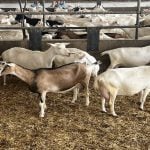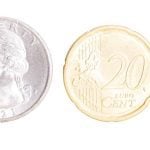NISKU, Alta. – When Craig Shaw first heard about recent hi-tech developments with remote control airplanes carrying digital cameras, he wasn’t sure if they were just toys for boys or if they could be useful tools on his farm.
Once the farmer from Lacombe, Alta., saw the Olds College experimental aerial photo plane tested on his farm, however, he was convinced it would go into the toolbox and not the toy box.
Olds College instructors Gordon Gilchrist and Murray Taylor brought their one-off camera-equipped airplane to a number of Lacombe area farms last summer, including Shaw’s, taking thousands of digital aerial photos.
Read Also

VIDEO: Ag in Motion documentary launches second season
The second season of the the Western Producer’s documentary series about Ag in Motion launched Oct. 8.
“Long before we had even heard about this airplane project, our experience had already shown us that with the variable soils and topography on our farm, there is potential for variable rate technology with both herbicides and fertilizer,” Shaw said.
“We’ve already moved into a more successful fertility program based on both soil and tissue tests. But we recognize that we still over-apply in some areas and under-apply in others. We know that as we push the envelope of higher yields, we will likely face more problems with lodging.”
Like most producers who continually make fine tuning adjustments in their management program, Shaw requires better feedback.
“Yield monitors are important, but they are only one source of information,” he said.
“They may show yield increases and reductions, but they don’t explain why. We feel we need information during the growing season. That’s what appeals to me about the aerial photos.”
New research is indicating that crop colour may be a strong indicator of crop health and nutrient uptake and Shaw thinks infrared aerial photography might help make those assessments.
“Affordable aerial photography fits into all of this.”
Shaw said now that he has seen the results of the experimental project, a significant part of his plan will be to take aerial photos during the growing season at different growth stages to help him identify good and poor soil as well as good and bad practices.
In 2006, he expects to build more accurate prescription maps by merging the aerial photo information with data he has already gathered from yield maps, soil tests and plant tissue analysis. The homemade aerial photos will serve as a sort of ground truthing for the other layers of information in his computer.
He thinks the high resolution photos produced by the Olds College ag drone are capable of tracing lodging problems, ponding, poor drainage, poor soil, nutrient deficiencies and a wide array of weed problems.
One of his top priorities for 2006 will be to put his wild oat control program under the close scrutiny of an airborne camera.
“I am convinced there is no need to spray a whole quarter for wild oats. But so far, I haven’t been quite brave enough to decide which areas to cut out. Our plan is to fly the fields and take the pictures when the wild oats head out above the crop, so we can identify the target areas.
He expects to significantly reduce input costs by flying over the crop at different times of the growing season once he becomes skilled at identifying weed colour and shape from the air. He plans to build the aerial information into a map for scouting and eventually transfer it into his sprayer’s mapping program.
“Our current sprayer technology already lets it automatically turn on and off as it passes through a prescribed problem area. The aerial photos will help us pinpoint those target spots.”
Gophers are another enemy the drone can locate with greater precision. The aerial photos give a better visual rating of the problem compared to walking the field because they have high enough resolution to show exactly where the gopher population is dense and where it’s sparse.
Shaw thinks affordable aerial photos can become a significant management tool to help him cope with shrinking margins.
“Crop prices have remained static and there’s no indication this is likely to improve in the future. Input costs continue to rise.
“There’s a strong need to find new ways to manage input costs while maintaining or increasing yields. No one would question the value of crop scouting. This tool can offer a very different perspective from the one you get at ground level.”















